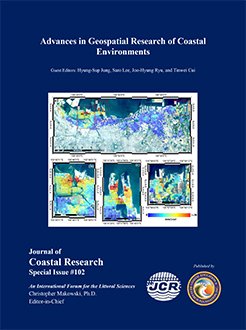Li, X.M.; Ma, Y.; Leng, Z.H.; Zhang, J., and Lu, X.X., 2020. High-accuracy remote sensing water depth retrieval for coral islands and reefs based on LSTM neural network. In: Jung, H.-S.; Lee, S.; Ryu, J.-H., and Cui, T. (eds.), Advances in Geospatial Research of Coastal Environments. Journal of Coastal Research, Special Issue No. 102, pp. 21-32. Coconut Creek (Florida), ISSN 0749-0208.
Accurate water depth data are essential to ensure navigational safety of ships operating in regions with coral islands and reefs; however, it is often difficult or impossible to conduct in situ bathymetric surveys in such areas. In this study, a Long-Short Term Memory (LSTM) neural network in deep learning was introduced for multispectral remote sensing detection of water depth, and an LSTM neural network model suitable for remote sensing water depth retrieval for coral islands and reefs was developed. The LSTM model retrieval result was optimal when using an Adam optimizer, batch size of 10 %, 2000 epochs and a 50/100 network structure. Compared with the classical Log-linear, Stumpf and improved Stumpf models, the LSTM model demonstrated better water depth retrieval capability with minimum mean absolute errors (MAEs) and mean relative errors (MREs) irrespective of whether using 300 or 2000 training points. The retrieval accuracy of the LSTM model with only 300 training points was better than the other three models with 2000 training points. Compared with SVR model, MRE of LSTM model reduced 19.03 % and 4.14 % respectively when using 300 and 2000 training points. Analysis of the Dong Island case showed that the water depth retrieval results based on the LSTM model clearly reflected the geomorphic units of the entire reef such as the reef flat, front slope (seaward slope), and patch reef. It also revealed subtle geomorphologic features of the reef flat surface and the valley system. The LSTM model demonstrated satisfactory performance for water depths of 5–25 m, with average MREs of 7 % and 9 % (minimum: 4.02 %, maximum: 14.62 %). These findings verify the application performance of the LSTM remote sensing water depth retrieval model both qualitatively and quantitatively.





